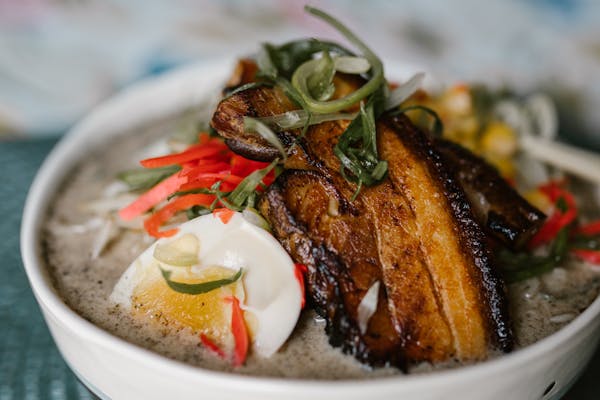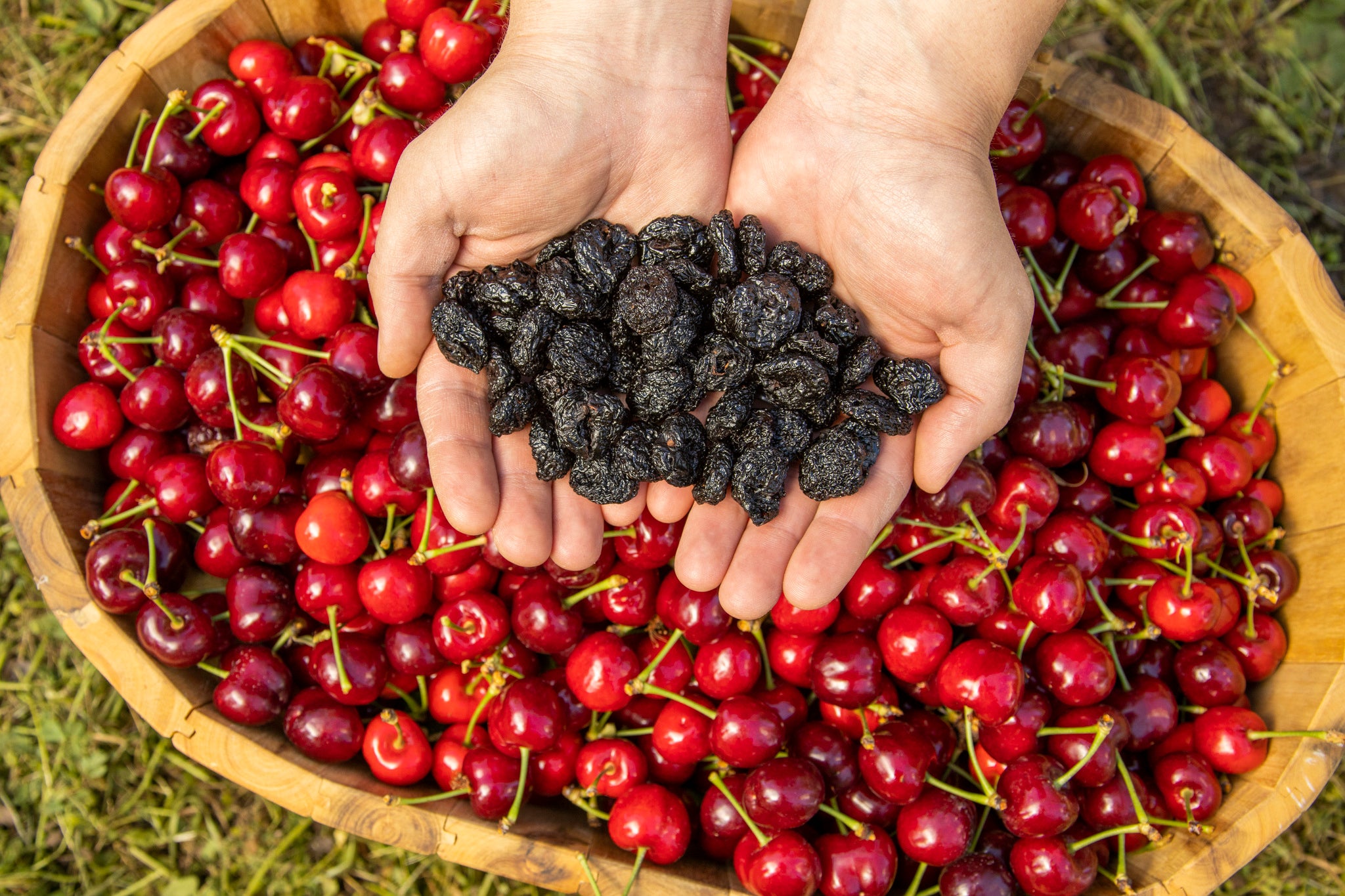Chicken Soup With Chinese Herbs Recipe
Chicken soup has been used as a folk remedy for respiratory illnesses for a long time. In 2000, the scientific exploration of this claim began and has continued. Wikipedia reports, “Chicken soup has long been touted as a form of folk medicine to treat symptoms of the common cold and related conditions. In 2000, scientists at the University of Nebraska Medical Center in Omaha studied the effect of chicken soup on the inflammatory response in vitro. They found that some components of the chicken soup inhibit neutrophil migration, which may have an anti-inflammatory effect that could hypothetically lead to temporary ease from symptoms of illness.[1] However, since these results have been obtained from purified cells (and directly applied), the diluted soup in vivo effect is debatable. The New York Times reviewed the University of Nebraska study, among others, in 2007 and concluded that “none of the research is conclusive, and it’s not known whether the changes measured in the laboratory really have a meaningful effect on people with cold symptoms.”[2].”1
Chicken soup is one of my favorite things to cook. The recipe below is meant to make a large pot of soup. It is a living recipe in the sense that the basic format stays the same but I will often rotate ingredients in or out of it. When I feel like more green vegetables I am likely to add bok choi or zuccini. Sometimes I add fingerling or yukon-gold potatoes. I often make a wild rice blend separately and add it to the finished product. Part of the fun of cooking this soup for me is the experimental factor.
One important way that I vary the recipe is by which Chinese herbs I choose to include in the soup. The varieties have to do with the ends that I am trying to achieve with the formula. It takes some skill to achieve this without making the soup inedible due to the strong flavors of Chinese herbs. Here are some simple herbal formulas you can experiment with:
Immune-boost: Huang Qi (astragalus root) 30g, Fang Feng (ledebouriella root) 10g, Bai Zhu (atractylodis macrocephelae) 10g (don’t use when you are already sick!)
Qi-boost: Huang Qi (astragalus root) 30g, Dang Shen (codonopsis root) 30g, Bai Zhu (atractylodis macrocephelae) 10g (don’t use when you are already sick!)
Blood-Builder: Gou Qi Zi (Goji berry, Chinese wolfberry) 30g, Hong Zao (jujube date) 15 pieces, Long Yan Rou (longan fruit) 15 pieces, Dang Gui Tou (head of Chinese angelica root) 1 piece
Lung Yin Vacuity (dry cough): Bai He (lilly bulb) 30g, Mai Men Dong (tuber ophiopogonis japonici) 15g, Jing Jie (Herba Seu Flos Schizonepetae Tenuifoliae) 15g
Insomnia: Suan Zao Ren (zizyphus seed) 15g, Wu Wei Zi (schizzandra berry) 15g, He Huan Pi (mimosa tree bark) 10g, Bai Zi Ren (biota seed) 10g
These are just some examples… there are many more possibilities! You will need to spend some time finding a reputable source of good quality Chinese herbs to purchase and use them in your soups. On to the recipe, below.
1 5-6 lb whole chicken
2 large yellow onions, chopped
2-3 large leeks, halved and sliced thickly
2 bunches green onions, chopped
2-3 large shallots, chopped
1 head of garlic, sliced thickly
1 bunch celery, chopped
8-10 medium carrots, chopped
6 medium parsnips, chopped
3 to 4-inch piece of fresh ginger, 1/2 sliced thickly with skin, 1/2 peeled & julienned
2 Tbs Herbs De Provence, crushed in mortar with pistil
Chinese herbs (as above), washed & soaked
2 cartons Organic Chicken Stock
1.5 lbs Shiitake mushrooms
1/4 cup Tamari Sauce
3 Tbs Mirin
Phase I
Wash and soak Chinese herbal formula for 30 minutes. Wash and chop and/or peel one onion & one shallot. Chop half the garlic, half the celery, half the carrots, half the parsnips and half the ginger. Remove the Shiitake stems and chop up the stems (they are used for the stock). Remove the root part of the leeks and wash. Remove the root and white parts of the green onions, wash them and chop them. Add all of these vegetables to a large soup pot (at least 6 qt sized or bigger). Remove the giblets from the chicken. Thoroughly rinse the chicken under cold running water. Place the chicken in the pot on top of the stock vegetables & Chinese herbs. Add water to cover the chicken or up to 1 inch below the top of the pot. Place the pot on high heat, cover and bring to a boil. Remove lid and turn down heat to medium-low (enough to maintain a mild boil). Boil for 30-40 minutes until the internal temperature of the chicken has reached 165 degrees F (as measured with a meat thermometer). While it’s boiling, use a large spoon to skim the surface of the grayish foam that accumulates. Carefully remove the chicken from the pot and place on a cutting board, let cool. Turn down the stove to low and allow the stock to simmer. Remove skin from the chicken and discard. Remove the meat from the bones and carcass and place in a Pyrex container with a sealing lid for refrigerator storage. Crack the bones and carcass and place back into the simmering stock. Simmer for an additional 40-60 minutes.
Phase II
While the stock is simmering, wash, peel and/or chop and/or slice the remaining vegetables. Place the Shiitakes and the green onions in one bowl and the rest of the vegetables in another larger bowl, set aside. Take to pot off the heat and strain the stock. Discard the dregs of the stock vegetables, herbs, bones & carcass. Add vegetables & Herbs De Provence to the pot and pour the stock over them. Add Mirin and chicken stock (from containers) to bring volume back up to the top of the pot. Place back on the burner and bring to a boil. Lower heat to medium-low and boil for about 25 minutes. Remove the pot from the heat, uncovered. Add mushrooms, green onions, and Tamari and serve. Before refrigerating, let the soup cool down for at least 30 minutes. For each serving, add chicken meat from the separate container to taste.
Enjoy!





